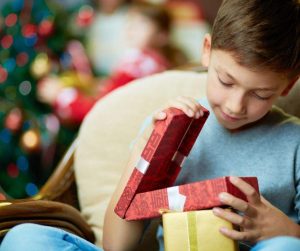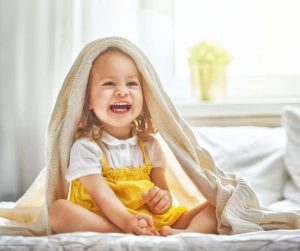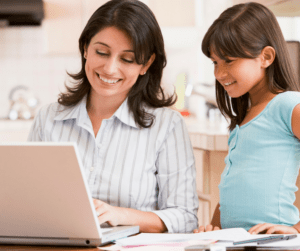Whether you’re looking for a family tent to enjoy some quality time camping together, or for a refuge inside your home from this freezing winter weather, there are a few key features that make for the best family tent for cold weather.
After countless camping trips with my own little ones in freezing temperatures, we have narrowed down the top picks for best winter tents that will keep your whole family warm and cozy during those chilly nights.
If you’re tired of freezing nights and cranky kids on your family camping trips, then you’re in the right place. As an experienced camper, I have scoured the market and found the top family tents that can withstand even the coldest weather and provide comfort and space for everyone.
With my recommendations, you can enjoy your coffee by the fire while your little ones sleep like angels. Trust me, your next camping trip will be a walk in the park with these new best tents by your side.
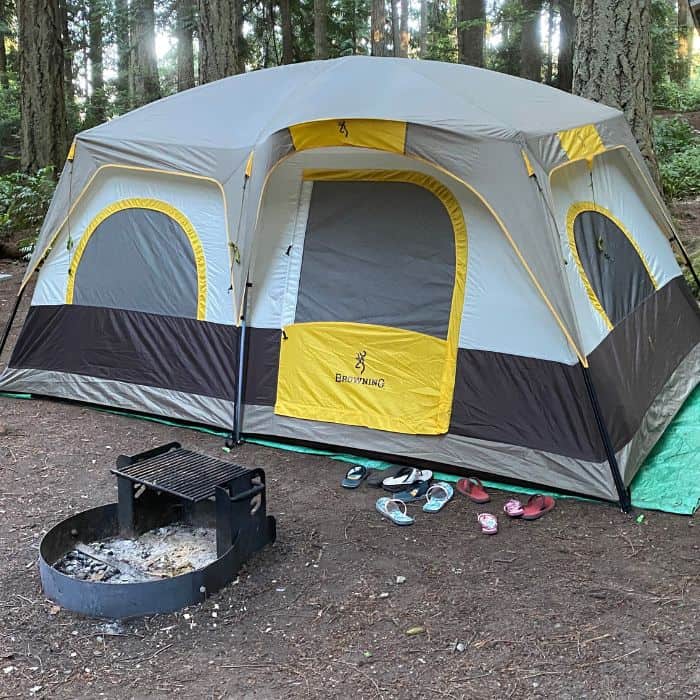
I research, test, recommend, and select only the best products for my readers.
If you click a link on this site and buy something, we may earn an affiliate commission. Thank you for supporting this small family business.
- Top Picks for Best Family Tent in Cold Weather
- The North Face Wawona 6
- Mountain Hardwear Trango
- Ozark Trail 12-Person 3-Room Instant Cabin Tent
- Browning Big Horn 8-Person Tent
- Introduction to Family Cold Weather Camping
- Understanding the 4-Season Tent
- Key Features to Look for in a Cold Weather Tent
- Assessing the Role of Peak Height and Floor Area
- The Importance of Insulation and Double-Wall Design
- Room Dividers: Privacy and Space Optimization
- Navigating Extreme Conditions: Windy and Wet Weather
- Extra Features for Extra Comfort
- The Benefits of Versatility: Warm to Cold Weather
- Budgeting: Cold Weather Quality at the Right Price Point
- Cold-Proofing Your Camping Experience
- Kids and Cold Camping: Safety and Enjoyment
- Long-Term Tent Care for Harsh Conditions
Top Picks for Best Family Tent in Cold Weather
Let me walk you through the different types of tents available to brave the cold. Trust me, these are the ones you want to huddle up in when the mercury dips. So, here’s a cozy list of heavy hitters in the cold season camping game.
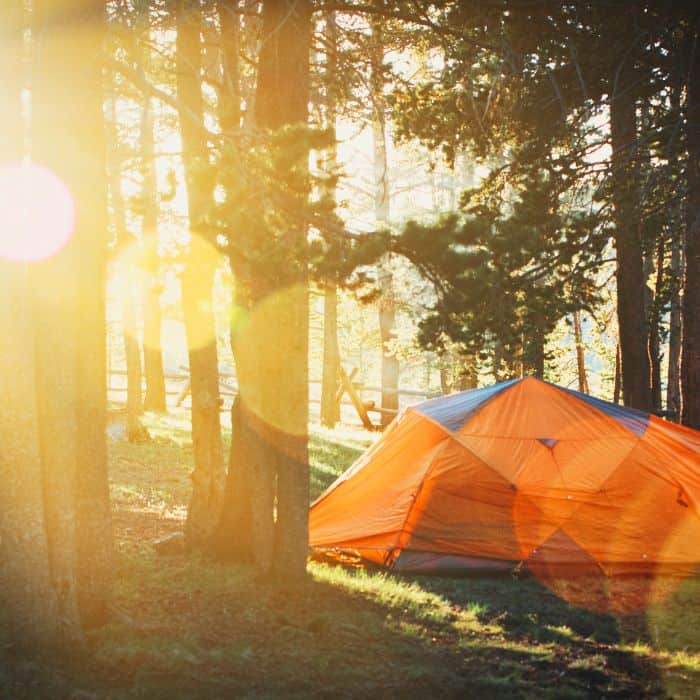
The North Face Wawona 6
Specs:
– Weight: 6 pounds
– Packed size: Stuffsack: 10″ x 32″ (25.4 cm x 81.3 cm)
– Floor size (square feet): 86
– Peak height: 42″
– Number of rooms: 1
– Shape: Tunnel
– Best for: Mountain camping
– Occupancy: 2
– Construction: Single wall
– Price: $$$
First up is type of tent is a beast. You can expect a tunnel tent with plenty of interior space (up to 6-people). Its double-wall design holds in heat like a champ and withstands blizzard-level snowfall. You’ve got a full stand-up height inside, and that translates to precious headroom during those long winter nights.
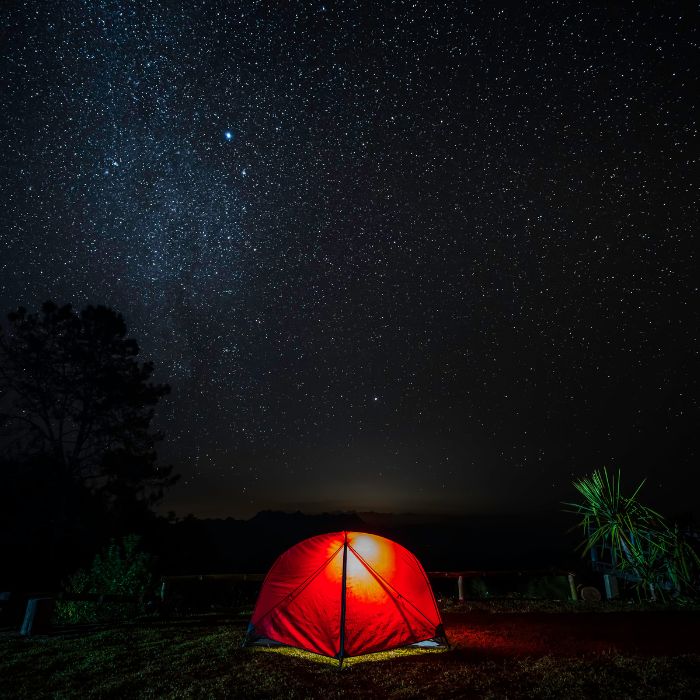
Closenature 2-Person Tent
Specs:
– Weight: 6 pounds
– Packed size: 16.5” x 5.9” x 5.9”
– Floor size: 7’3” x 4’11”
– Peak height: 3’10”
– Number of rooms: 1
– Shape: Dome/Round
– Best for: Backpacking, Camping & Hiking, Mountaineering
– Occupancy: 2-person tent
– Construction: Double-layer
– Price: $
This is the best winter tent you’ll find the mountaineering experts using, especially in areas with heavy snowfall. With a geodesic dome structure, it practically laughs in the face of heavy winds and frostbite weather. The square footage is a bit small (it’s designed for 2-people) but depending on the type of camping you’re doing, that might not matter.
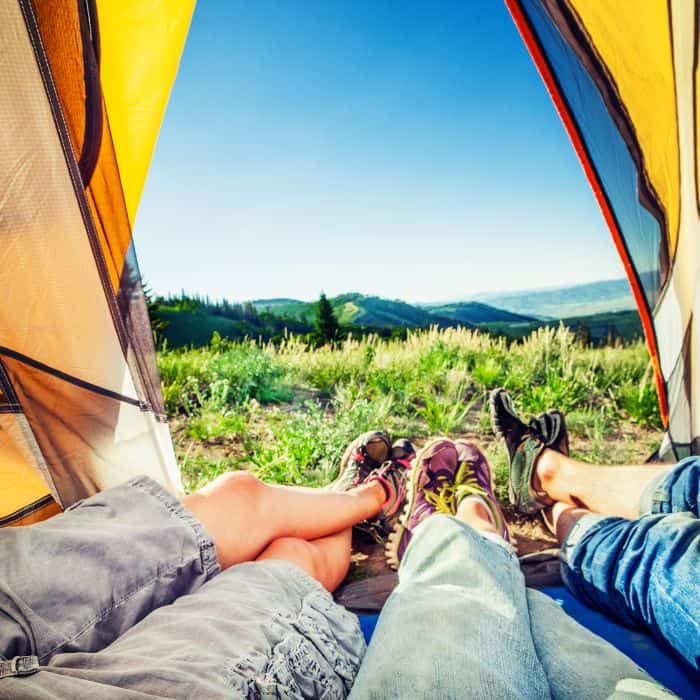
Ozark Trail 12-Person 3-Room Instant Cabin Tent
Specs:
– Weight: 38.2 Pounds
– Packed size: About 4’x10”x10”
– Floor size: 160 Square Feet
– Peak height: 76 Inches
– Number of rooms: 1 Room with Extension
– Shape: Rectangle
– Best for: Camping & Mountaineering
– Occupancy: Up to 12 people
– Price: $$
Now, if you’re herding a large crew, this is your lodge in the wilderness. Rain or shine, wind or snow, it stands its ground. Plus, those room dividers? Yeah, they’re a godsend for a little privacy and keeping sanity intact.
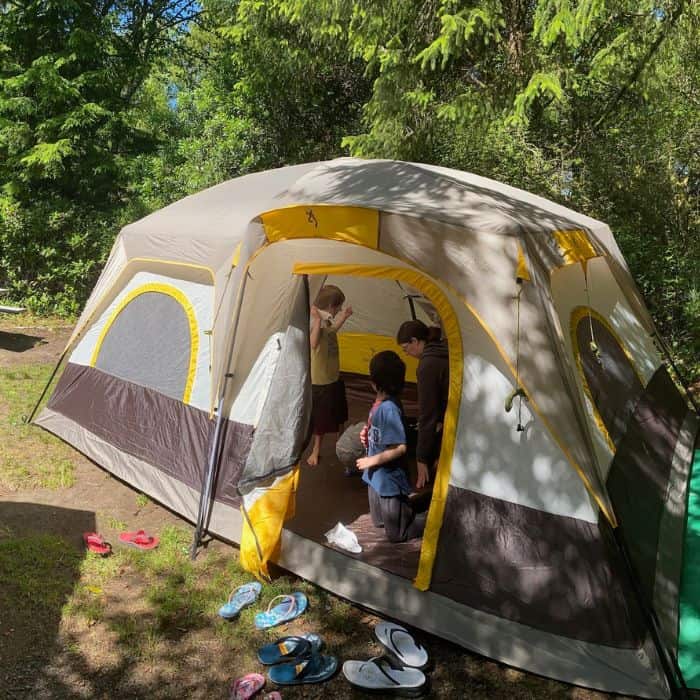
Browning Big Horn 8-Person Tent
Specs:
– Weight: 34 lbs. 11oz.
– Packed size: 2’4″ L x 11.5″ W x 11.5″ H
– Floor size: 15′ L x 10′ W
– Peak height: 7’3″
– Number of rooms: 2
– Shape: Cabin Style
– Best for: Festival, Hunting, Camping & Hiking, Car Camping
– Occupancy: 8-person tent
– Construction: Free-standing two-room cabin style tent with fiberglass poles and steel uprights
– Price: $$
This tent is my family’s first tent. From strong winds to surprising snowfall, it’s kept my family snug as bugs. There’s plenty of room for everyone (including my children’s small items they can’t leave home without), sturdy storage pockets (although I wish they had more), and at a price point that doesn’t make your wallet cry. It’s a great choice for families to enjoy camping and making memories in.
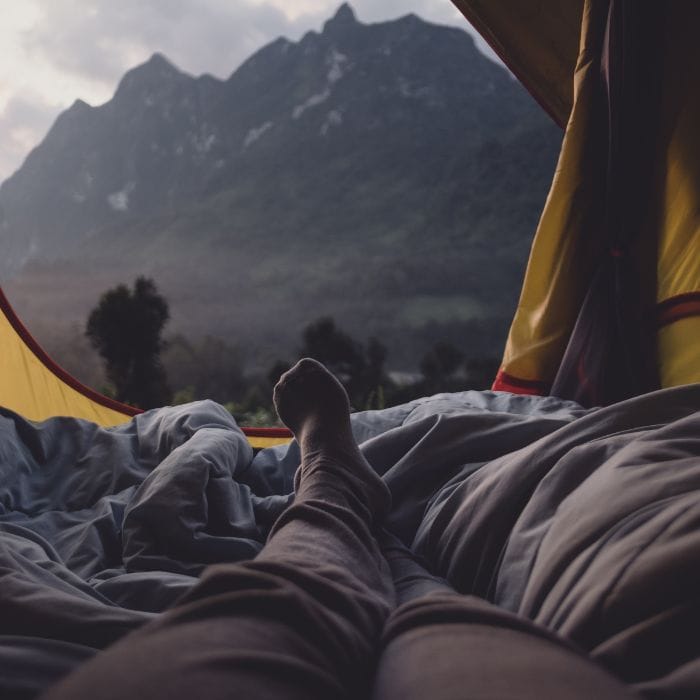
Key Takeaways To Remember For Your Family Tent:
Versatility: These tents double down on both cold and warm weather capabilities, giving you more bang for your buck.
Space and Comfort: When the outdoors rocks and rolls with bad weather, these tend to keep you comfortable, with room to spare for your squad and gear.
Value: Investing in a tent that can handle Mother Nature at her worst without breaking the bank is a big deal in family adventure memories.
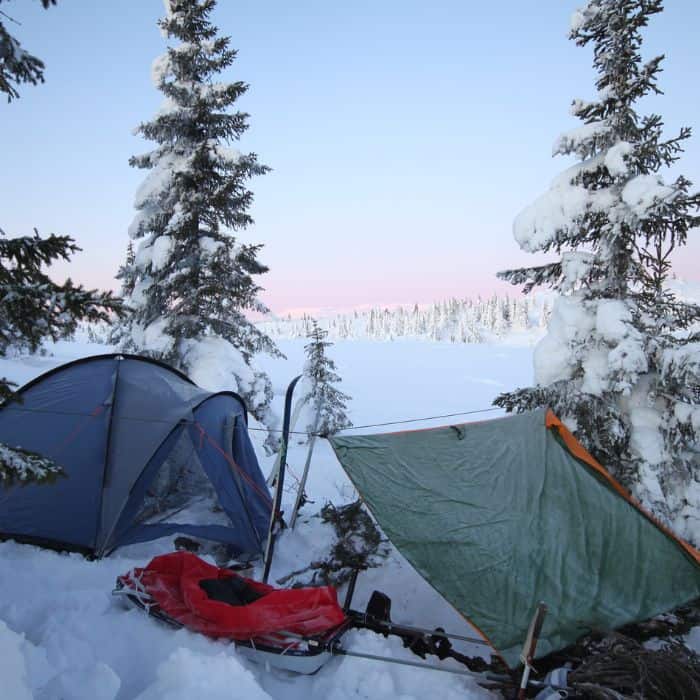
Analyzing Tent Shapes: Dome Tent vs Cabin Tent Advantages
Dome Tents – Cozy and Wind Resistant
Dome tents are great for us when we’re dealing with windy conditions. Their curved shape deflects wind, making them less likely to collapse on those blustery nights. They tend to hold heat in well too, keeping us snug when frost hits.
Cabin Tents – Spacious Family Comfort
When we want elbow room, cabin tents are our go-to. They have straight walls that maximize headroom and floor space, meaning more room for kids to play and for us to stand up while getting dressed. Perfect for longer stays when comfort is key.
Dome Tents – Compact Footprint
On rocky or uneven terrain, dome tents are easier for us to place. They take up less space, so I can squeeze them into that perfect sheltered spot between trees where the wind won’t bother us as much.
Cabin Tents – Better Organization
With more vertical space, it’s easier to organize our gear. We can hang lights and store clothes without feeling cramped. It’s almost like having a little home away from home.
Dome Tents – Simpler Setup
I’ve found that dome tents can be quicker to set up, which is a blessing when the sun’s going down and the kids are getting antsy. They usually require fewer poles and less fuss.
Cabin Tents – Privacy Sections
Room dividers in cabin tents give us privacy. This is a win when changing clothes or when someone needs a quiet spot to rest. We appreciate that bit of separation during extended trips.
Dome Tents – Less Headroom
The downside is the sloping walls. This means less headroom and can feel a tad claustrophobic when we’re all bundled inside waiting out a storm and trying to stay warm.
Cabin Tents – Can Catch Wind
Their large, flat sides can be like sails in the wind, making them less stable in high winds. This means we need to ensure we’re taking extra care when pegging them down and using all the guy lines.
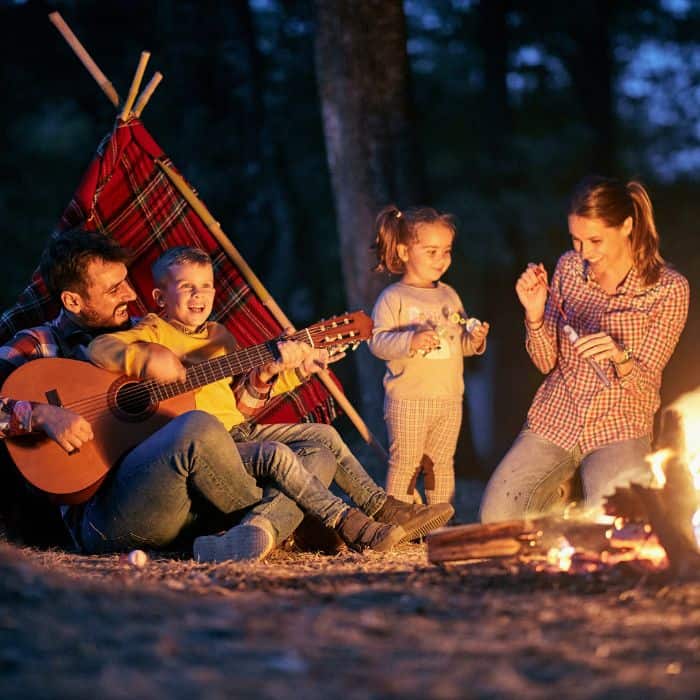
Introduction to Family Cold Weather Camping
So, here’s the scoop on family cold weather camping. It’s all about laughter around a frosted campfire and waking up to a world covered in a sparkling frost. The catch? You’ve got to bundle up in the right gear.
And when I talk gear, I mean a tent that scoffs at the chill – because no one’s laughing if you’re shivering through the night.
We learned that the hard way. But then, we got our hands on the Browning Big Horn tent. What a game-changer. For five years, this sturdy shelter has been a trusty sidekick on our family adventures.
Whether it’s bracing against high winds and heavy rains on the PNW seaside or cuddling up during icy -23F nights surviving Missouri’s winter, that tent stood as our fortress. Let me tell you, renovating an old house with no walls or ceilings in winter? Only doable because we had that sanctuary of warmth.
So, what makes a family tent ace the cold weather test? Think beyond a mere pile of nylon and poles. We’re talking a shelter that locks in the warmth, laughs in the face of gales, and keeps the spirit of family adventure alive, even when the weather’s throwing a tantrum. Let’s dive into the secrets that transform a good tent into a great family cold weather fortress.
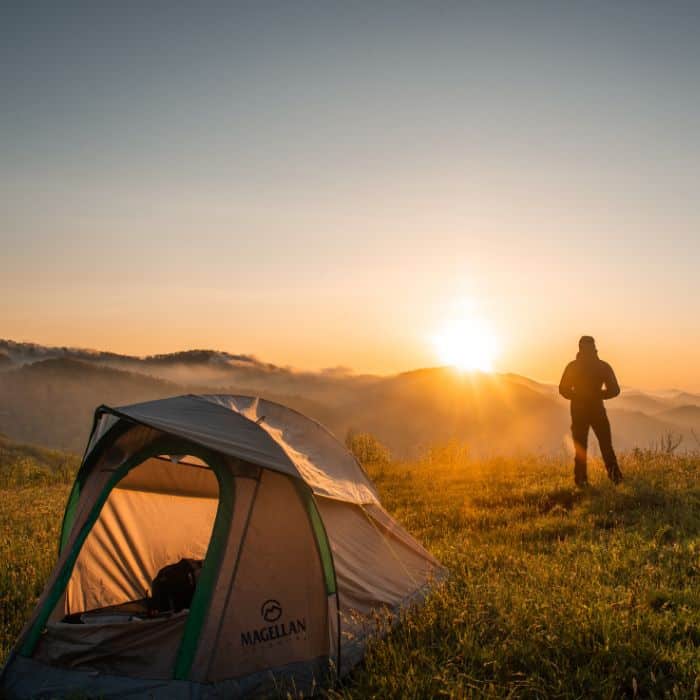
Understanding the 4-Season Tent
Okay, picture this. We’re talking about a winter camping tent that’s like a mini fortress, meant to deal with whatever Mother Nature decides to throw at us. That’s what a 4-season tent is. It’s not your run-of-the-mill camping gear. This is the stuff serious cold-weather campers swear by. So, what sets it apart, you ask? Well, let’s dive in together.
The Fabric: We’re talking thicker, tougher, and designed to snub out the howls of winter. These tents are the bad boys of the tent world, made to take all sorts of insults from high winds to heavy snowfalls.
The Frame: They’ve got bones of steel. Okay, maybe not literally steel, but the frames are bolstered to withstand loads that would have your average tent kissing the ground.
The Insulation: These aren’t your breezy summer tents. No, sir. 4-season tents hold in heat like it’s their one job in life, keeping you cozy while the world freezes outside.
Ventilation: They manage to keep you warm while still letting you breathe. How’s that for magic? Good vent systems mean you’re not waking up in a personal ice cave from your own breath.
The Design: It’s sleek and it’s smart. These tents are shaped to fend off snow buildup and laugh in the face of gale-force winds.
So, when it comes to cold weather camping, these tents aren’t just a good idea; they’re like bringing a tank to a pillow fight. Trust me, when the night drops below freezing, you’ll be thanking yourself for choosing a 4-season tent.
It’s the difference between shivering and sipping on a hot cocoa, feeling all smug about your top-tier gear choices. And let me tell you, that’s a great feeling.
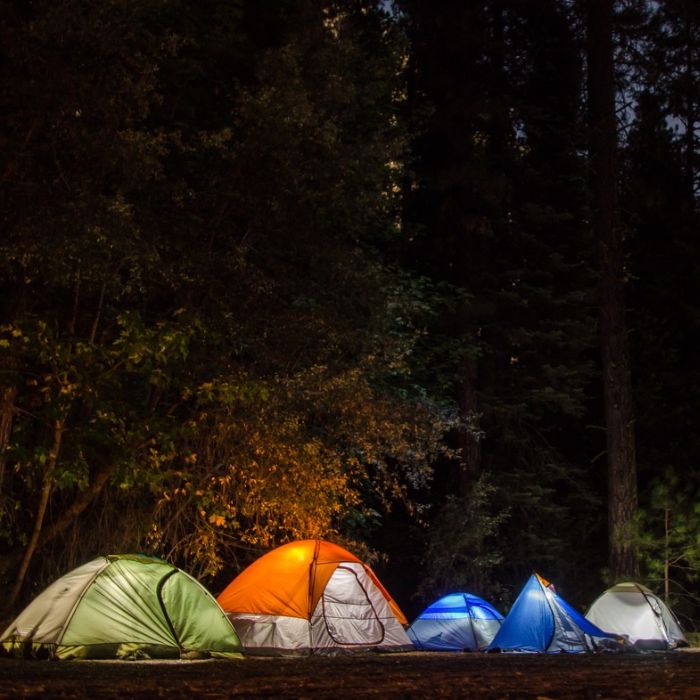
Key Features to Look for in a Cold Weather Tent
Peak Height: Look for a tent with enough headroom to stand up in, it’s a game-changer. You don’t want to hunch over all evening—trust me on that.
Floor Area: Go big or go home, right? Enough space means comfort for everyone. Get a tent with ample floor space so you can fit your gear and still have room to play a card game or two.
Heavy-Duty Fabric: You’ll want fabric that laughs in the face of gnarly weather. Durable, preferably waterproof material that keeps the cold out and the warmth in is vital. The warmest tent you’ll find is useless if it gets wet and soggy.
Solid Structure: Strong poles, preferably aluminum or composite, should be able to withstand harsh winds and heavy snow loads without buckling at the attachment points. The last thing you want is to wake up with the sides of the tent collapsing.
Ventilation System: As mentioned earlier, proper ventilation is key to staying warm and comfortable while using extreme cold weather tents. Look for tents with adjustable vents to control airflow and prevent condensation buildup inside the tent.
Strong Frame: The last thing you need is your shelter tumbling down in a gust. A sturdy frame stands tall, even when the winds are having a field day.
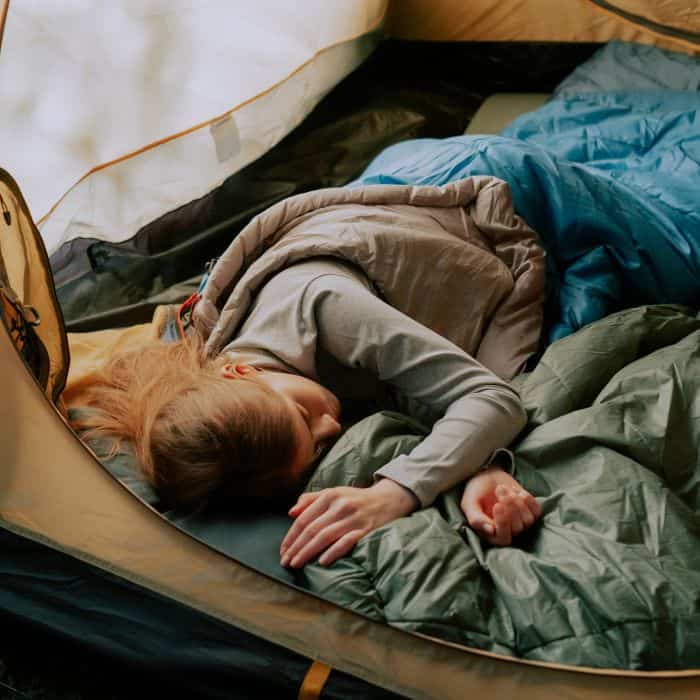
Assessing the Role of Peak Height and Floor Area
I’ve got to tell you, when you’re bracing for a cold night in the wild, the tent’s peak height and floor area aren’t just numbers; they’re your lifeline to comfort. Think about it, you’re not going to do a lot of hopping around in freezing temperatures, are you?
So, enough room to stand up straight, courtesy of a generous peak height, it’s a game-changer. It means slipping into those thermal layers without doing a wobbly dance on one foot. And let me tell you, your freezing toes will thank you for the dignity.
Now, when it comes to floor space, it’s like real estate; the more, the merrier, right? Especially when it’s you and the entire clan camping. You need the space to stretch out, to keep everyone’s sleeping bags from overlapping. It’s about personal space, my friend.
You’re packed like sardines during the day, so a little elbow room at night? That’s golden. Plus, believe me when I say, a bit of organization goes a long way on cold nights. That extra floor area lets you set up things neatly, keeping wet boots and gear at bay, so you stay dry and cozy.
All in all, peak height and floor space aren’t just specs; they’re your secret weapon against the cold. They give you the breathing room you need to keep the chill outdoors where it belongs.
Trust me, when you tuck your family into a cold-weather fortress with enough room to live a little, you’ll sleep sound even when the frost is nipping at the tent’s door.

The Importance of Insulation and Double-Wall Design
Listen up, because when we talk insulation and double-wall design, we’re not just spinning a camper’s yarn. Proper insulation keeps us snug as a bug on those nippy nights. It’s like wrapping your family in a giant thermal blanket, only better, because you’re cocooned in layers that fend off the chill.
And let me tell you, those layers matter. When we braved that brutal -23F Missouri winter, our tent’s insulation didn’t just keep us warm; it became our survival capsule.
Then there’s the double-wall design – that’s your defensive line against the cold seeping in and the warmth skedaddling out. Double walls mean a buffer zone, right?
Think of it as your personal forcefield against Jack Frost’s bite. That gap between the layers traps air – and warm air means your family’s comfort doesn’t bolt when the zipper shuts.
On our frozen escapades, that double-wall design was our MVP. Long after the sun dipped below the horizon, and the night got stingy with its temperatures, we were tucked away, toasty as if we’d never left home. It channeled the everyday magic of a warm living room right there into the wild.
So, here’s the bottom line: In cold weather camping, never skimp on the tent. Insulation and double-wall design can make or break your adventure. With those sorted, cold weather’s got nothing on you. Trust me, our frosty family sagas would’ve had a chiller ending without them. And I’m not about to argue with the cozy conclusion we got, thanks to our trusty cold-weather fortress.
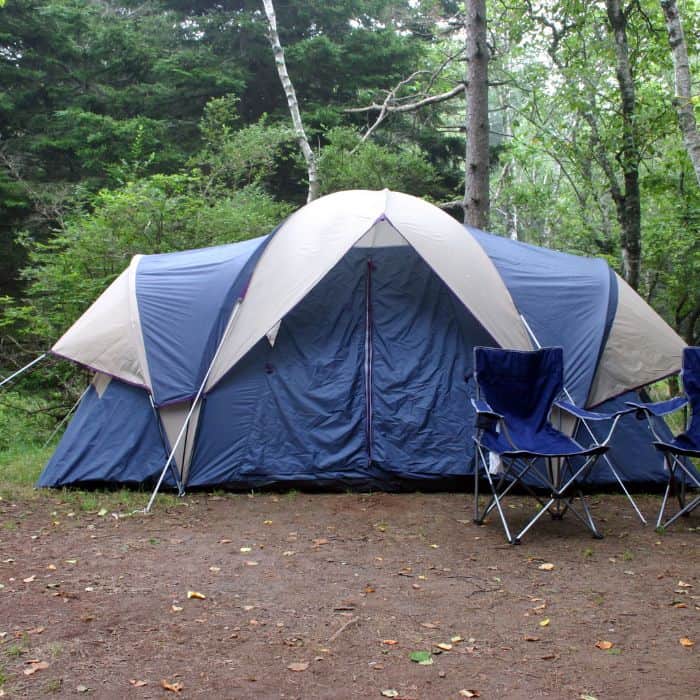
Room Dividers: Privacy and Space Optimization
Let’s get real, when camping with the fam in the biting cold, a little privacy can be just as crucial as staying warm. That’s where room dividers come into play – and trust me, they’re a game-changer. Imagine transforming a single vast space into separate rooms with just a zip. It’s not just about privacy; it’s about creating an illusion of normalcy even when you’re miles from home.
Managing Space: In our rugged outdoor stays, those dividers were more than just partitions; they allowed us to section off a ‘bedroom’ for us parents, giving some much-needed solitude after a long day of adventures.
Functional Organization: With kiddos in the mix, chaos reigns, but dividers give each their corner, keeping sleeping bags separate from play areas. It means no more stumbling over toys on those midnight bathroom trips.
Versatility on Demand: Need an open space for family bonding? Zip away the dividers. Craving privacy? Zip them back. That’s the kind of flexibility that eases the tension of camping in tight quarters.
Efficient Heating: On icy nights, dividing the tent can help contain heat to smaller areas, making it cozier and cutting the chill as we huddle together.
Day-to-Night Conversion: And come on, it’s not just about the night. During the day, dividers lift to open up the tent for socializing. At night, they drop to give us restful, undisturbed sleep.
In essence, room dividers are the silent heroes in large family tents. They help maintain a sense of order, warmth, and intimacy even when the weather outside is anything but inviting.
For us, it’s about squeezing out every drop of comfort from our cold-weather haven. And really, isn’t that what family camping is all about?

Navigating Extreme Conditions: Windy and Wet Weather
Let me tell you, when it comes to family camping, having a tent that can las through extreme weather conditions is a game-changer. Picture us, nestled in the lush woods, when a sudden storm hits. With the Browning Big Horn, our haven against the chaos, the pounding rain feels like a mere afterthought. This tent, it’s stood the test of time and weather – I’m talking high winds that could easily turn a lesser tent into a sad fabric tumbleweed.
One evening, as the gusts howled like wolves outside, a feeling of security wrapped around us in our polyester fortress. Because this isn’t just any tent – it’s a 4-season tent, designed with the kind of specs that scoff at unruly weather.
We’ve been in situations where the rain was so heavy, I half-expected to see Noah sail by. But inside? Dry as a bone. Not a single leak. That’s the double-wall design at work – it keeps the warmth in and the water out.
And the peak height? My kids can stand up in there – no hunching over necessary. As the wind teases the walls, we’ve got enough floor space to sprawl out with our board games and hot cocoa.
I’ve seen tents crumple under far less. But ours? It’s stood unmoved amid storms that made the headlines. If that’s not a testament to this tent’s mettle, I don’t know what is. We chose it for our family’s adventures, and it’s never let us down – not once.

Extra Features for Extra Comfort
Let me tell you, when you’re braving the cold with your family, every bit of comfort counts. Which is why those extra bells and whistles on a tent are more than just nice-to-haves; they can transform your frosty campsite into a cozy retreat.
Large vestibules are a game changer, folks. Imagine having all that space to stash muddy boots and damp coats outside your sleeping quarters. It keeps the clutter out and the warmth in. Trust me, you’ll thank yourself for choosing a tent with that added real estate when you’re not tripping over gear in the middle of the night.
Now, let’s chat about my personal favorite: the stove jack. Picture this – a wood stove gently burning inside your tent, the embers crackling while the cold bites at the world outside. Safe, secure, and approved for use, a wood stove can be a lifeline during those bone-chilling nights.
Not every tent has a stove jack, but invest in a tent that does, and you’re in for a warm treat. Plus, it’s not just for warmth; a stove adds a nostalgic glow, a heartwarming ambiance that brings the family together, sharing stories and hot cocoa. The right cold weather tent with these features? It’s not just shelter; it’s your winter home away from home.
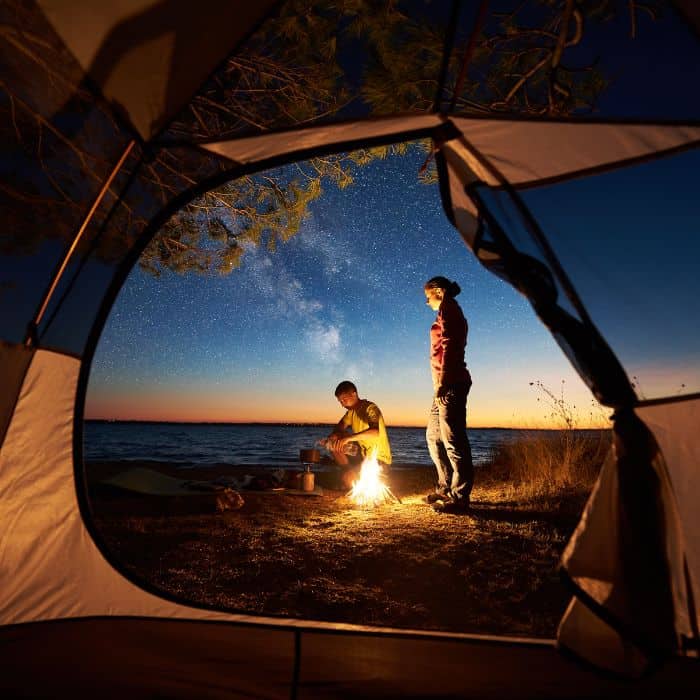
The Benefits of Versatility: Warm to Cold Weather
Let’s talk versatility. You know how some things just can’t handle change? Well, a top-notch cold weather tent isn’t one of them. I’ve learned this firsthand. It’s like owning a jacket that’s perfect for a brisk autumn evening but also stands up to a blizzard.
Having a tent you can count on, no matter if you’re bracing against the chill or just trying to catch a breeze in the summer, it’s crucial. And trust me, versatility does not come at the expense of comfort.
I’ve been there, shivering on a cold night, but also trying to keep cool during a heatwave. Having a tent that can tackle both? Priceless. Think about it. The same tent that locks in warmth when you’re surrounded by snow can offer a sanctuary of cool when the summer sun gets too personal.
It’s not just practical, it’s economical. Instead of buying separate gear for each season, you invest once. This means more money for s’mores and less for storage space. A tent that’s a champ in diverse conditions is like a badge of honor, proving its worth trip after trip.
You find the right tent, and suddenly, it’s a reliable companion, ready for whatever nature throws at it. Trust me, the right tent doesn’t shy away from a little weather – it’s ready for any day on the calendar.
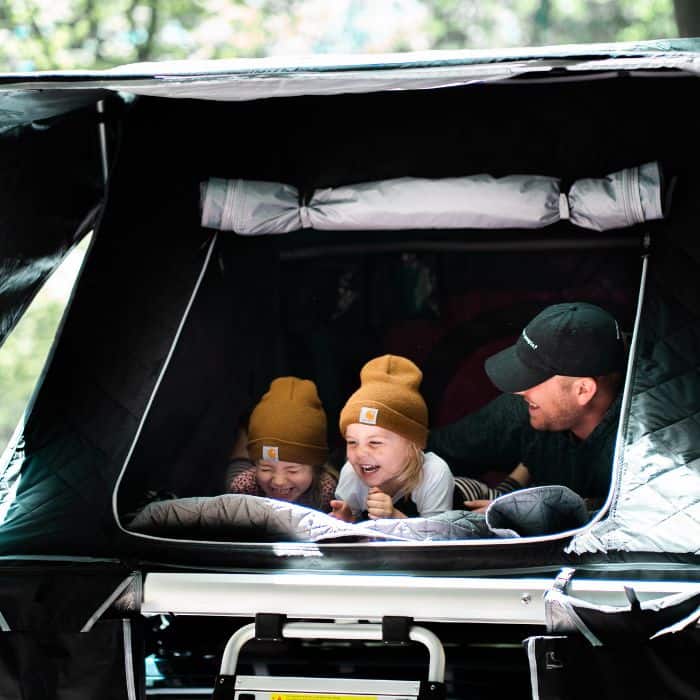
Budgeting: Cold Weather Quality at the Right Price Point
You know that sinking feeling when you realize you need a top-notch tent for those bone-chilling trips but your wallet’s already gasping for air? Yeah, I’ve been there. But, let me tell you, scrimping on a cold weather tent isn’t the place to pinch pennies.
A good tent is your family’s last stand against the nastiest of cold snaps, so the price tag, while it stings, matters less than a reliable haven in the wild.
However, let’s be real – I’m not about to throw away my hard-earned cash on just any pricey igloo. It’s all about that sweet spot, finding the right tent that marries quality with cost. I mean, why pay top dollar for a canvas tent if a sturdy, affordable dome can do the trick?
Here’s the scoop – you want a tent that’s got your back when the mercury plummets. But, it’s not about grabbing the swankiest, most expensive model. Truth is, some mid-range tents punch way above their weight. Stay sharp, compare those features, and don’t get suckered in by a brand name.
Listen, if you can bag a tent that’s packed with a punch for insulation, durability, and that sweet, sweet warmth, but doesn’t make you mortgage the house – you’ve struck gold. My motto? A comfy campout shouldn’t leave your finances frostbitten. So, do the legwork, find that deal and remember, in the wintry wilds, your tent is priceless.
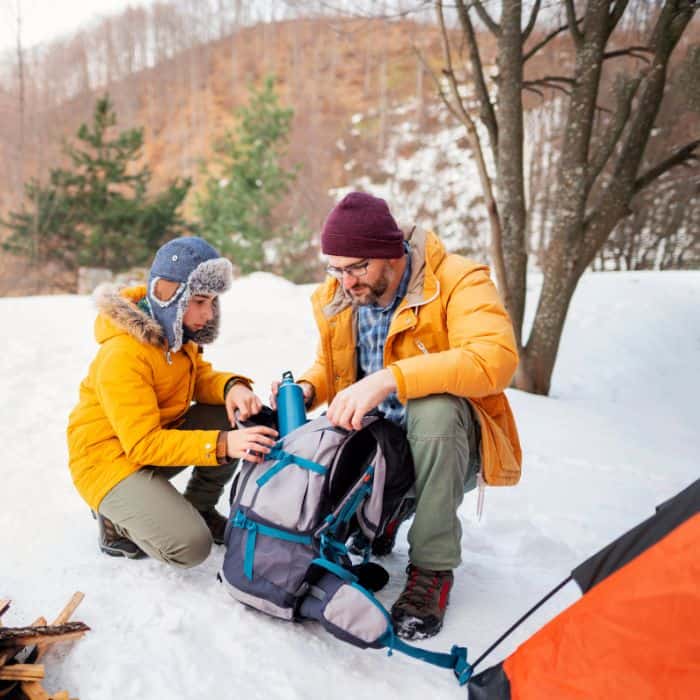
Cold-Proofing Your Camping Experience
So, you’re all set with your family tent and you think you’re ready to face the chill? Think again. There’s more you can do to fight off the cold and make sure everyone stays cozy. I’ve been down this road – trust me, a little extra effort goes a long way. Now, let me tell you how to really lock in the heat.
Start with the ground: It’s all about the base. Lay down insulated tarps or foam pads before you set up your tent. It’s like a barrier between you and the frozen ground – crucial for staying warm.
Thermal blankets are a must: These aren’t your regular picnic blankets. Grab some space blankets; you know, the shiny ones? They reflect heat back at you. Drape one over the top of your tent, under the rain fly, and you’ll keep so much more heat inside.
Trap that heat: Layer up inside too. Use rugs or carpets to add insulation and warmth underfoot. It makes a difference, especially when you’re stepping out of your sleeping bag in the morning.
Bring out the sleeping pads: This is no time for yoga mats. Get thick, insulated sleeping pads that’ll give you a comfy cushion from the cold ground.
Seal it tight: Check for drafts and close ’em up. Ensure zippers are fully closed and if your tent has vents, only open them a smidge. You need a bit of airflow, sure, but you don’t want all that precious warm air escaping.
Double up: If you’ve got space, pitch a smaller tent inside your large one. Sounds quirky, but it’s like double glazing – an extra layer to trap warm air. Plus, it’s a fun fort for kids (and, let’s be real, adults too).
Alright, there you have it. A few practical moves and you’ll turn that tent into a snug haven, no matter how cold it gets outside. Happy camping and stay toasty, my friends!

Kids and Cold Camping: Safety and Enjoyment
You’ve got to play it like a chess grandmaster – strategic and always two steps ahead. I need to ensure they’re bundled up but not stuffed to the point of immobility – it’s a delicate balance. You see, their tiny bodies lose heat faster than ours, so layering is key, along with a constant supply of hot cocoa – trust me on that one.
Warm Gear: I check, then double-check those gloves and hats because, let’s be real, one always goes rogue.
Safe Sleep: We make a snuggly sleep fortress with extra pads and sleeping bags rated for the North Pole – or thereabout.
Constant Check-ins: Every so often, I’m on them like a detective, scanning for chattering teeth or shivers. If they’re cold, we act FAST.
Engagement: Keep them moving, keep them playing. A game of tag can fight off more chill than the thickest socks.
Education: We talk frostbite and hypothermia simply so they know why I’m like a broken record about keeping those mittens on.
Emergency Prep: Our kit’s ready for anything – think a full-on superhero utility belt for winter camping. It’s got your first aid basics amped up with heat packs and emergency blankets.
But it’s not just about staying warm. I’m all about making those icicle-laden memories dazzling. Sled races, snow fort construction extravaganzas – you name it, we’re on it. As parents, it’s easy to stress over cold weather, but when you see the sparkle in their eyes as they catch that first snowflake on their tongue, you remember – this is why we brave the freeze.
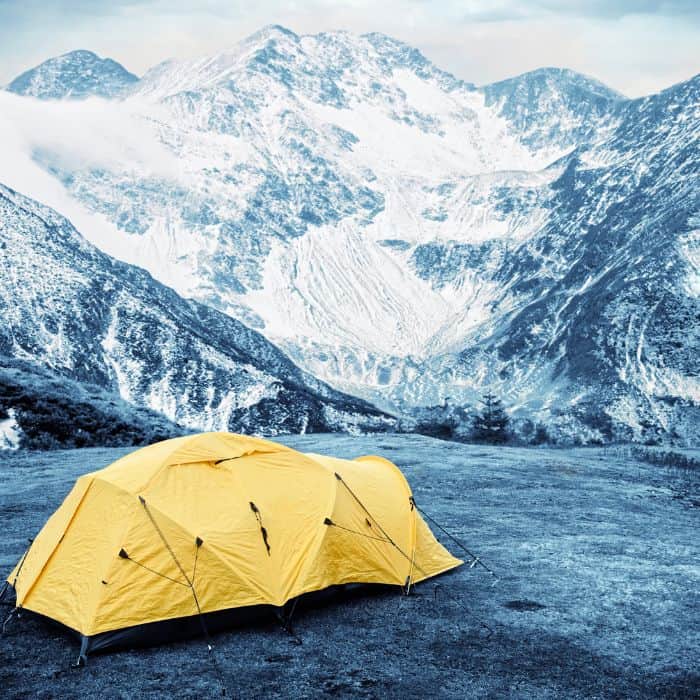
Long-Term Tent Care for Harsh Conditions
Let me spill the beans on keeping your cold weather tent in sterling shape. No beating around the bush – when you’re facing down Mother Nature’s frosty side, your tent is your sanctuary. And like any sanctuary, it needs a little TLC to keep standing strong.
Clean the Slate: After each trip, you’ve got to clean your tent meticulously. Shake out all that snow, dirt, and pine needles. A soft, damp cloth? That’s your best buddy for wiping down the canvas. Standing water and snow are no joke; they can lead to mold and mildew, and in my book, that’s a firm no-go.
Dry Ground, Happy Tent: Always make sure your tent is bone-dry before storing it. Harboring moisture is like sending a VIP invite to decay and damage. We place our tent on a tarp before setting up, then sweep and wipe it out until it’s as dry as a desert bone. That’s right, no shortcuts here.
Loosey-Goosey Storage: When it’s time to pack up, take it easy on the folds and rolls. I’ve learned to store my tent loosely in a cool, dry place. Compression bags? Ditch ‘em. Your tent needs to breathe, not suffocate. A good practice is treating it like your favorite snuggly sweater rather than a pair of socks crammed in a drawer.
Seam Sealer to the Rescue: Regularly check the seams. They’re the frontline soldiers against leaks and drafts. Slap on that seam sealer if you spot any frays or tears. It’s like body armor for your tent, and believe me, it’s a lifesaver when the winds don’t play nice.
Gentle Repairs: Got a rip or a snag? Patch it up pronto, but go easy with the needle and thread. Rough handling can make things worse. If sewing’s not your jam, a patch kit does the trick no sweat. It’s like first aid for your home away from home.
UV Protection Isn’t Just for Beach Days: The sun’s rays are all fun and games until they degrade your tent fabric. Whenever possible, pitch in the shade. Can’t find shade? Well, then look for a tent with UV-resistant fabric from the get-go – it’s like built-in sunscreen for your trusty canvas.
Stick to these simple tips and your tent will stand tall through ice, sleet, and everything else the sky decides to throw down. A well-cared-for tent equals countless cozy nights and priceless memories. And that’s the name of the game, isn’t it?
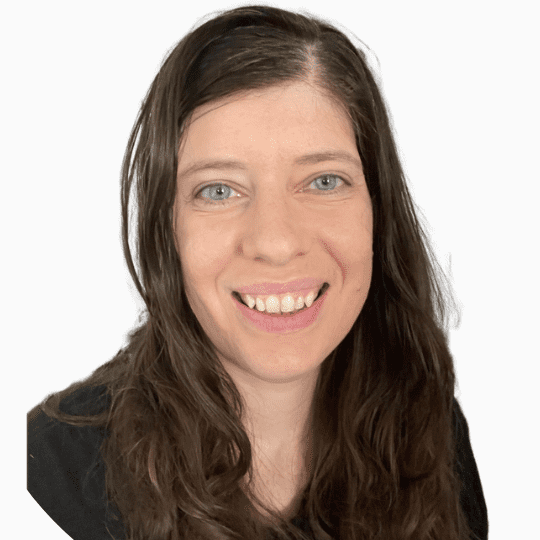
Micah Klug is a wife, homeschooling mother to five children, and author. She teaches time-tested solutions to help parents remember what matters most in life, including strengthening their home, faith, and family relationships. To learn how a child who grew up in an authoritarian home is now creating an environment of peace and joy in her own home visit this page. If you want to contact Micah, send her an email here or email [email protected].
